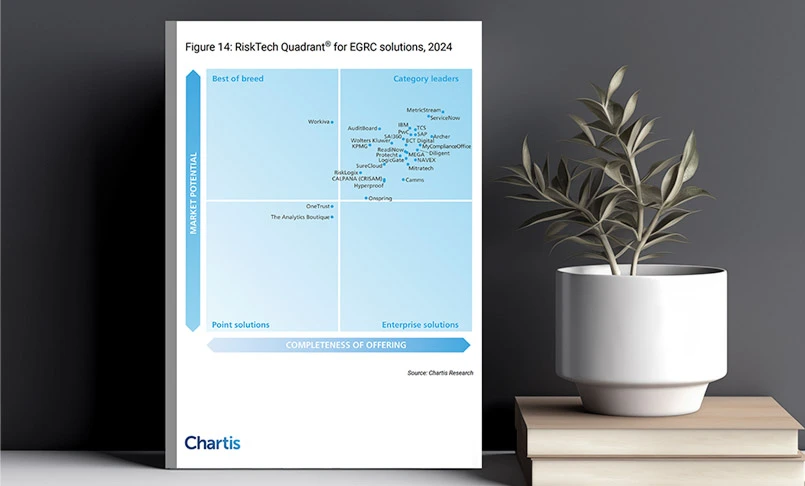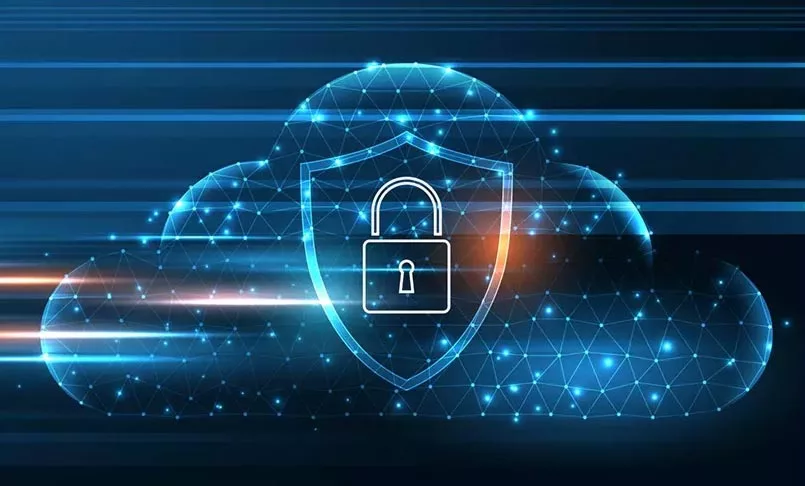ConnectedGRC
Drive a Connected GRC Program for Improved Agility, Performance, and Resilience
-
BusinessGRC
Power Business Performance and Resilience
Discover ConnectedGRC Solutions for Enterprise and Operational Resilience
Explore What Makes MetricStream the Right Choice for Our Customers
Discover How Our Collaborative Partnerships Drive Innovation and Success
- Want to become a Partner?
Find Everything You Need to Build Your GRC Journey and Thrive on Risk
Learn about our mission, vision, and core values
Managing Vendor Risk : A Critical Step toward Compliance
Organizations that rely heavily on vendors but don’t have sufficient visibility into their vendor networks are exposing themselves to high risks. A strong Vendor Risk Management (VRM) program helps companies anticipate inherent risks rather than simply reacting to adverse situations and incidents after they occur.

To perform effective vendor risk management, organizations must follow a systematic process that includes identifying, assessing, mitigating, and monitoring risks associated with third-party vendors, ensuring safeguarding from potential pitfalls, and fostering more reliable partnerships.
Strategic vendor partnerships help organizations achieve their business objectives cost-efficiently. However, with increasingly complex vendor networks, rising customer demands, and a rapidly changing regulatory environment, there is tremendous pressure on companies to ensure that their vendors maintain consistent compliance with internal policies and various evolving regulations.
Outsourcing business activities to a vendor does not include the outsourcing of compliance responsibility. The onus is on companies to conduct thorough vendor due diligence and monitoring in order to understand vendor relationships, mitigate vendor risks, and avoid compliance penalties, damages, and costly investigations.
Organizations that rely heavily on vendors but don’t have sufficient visibility into their vendor networks are exposing themselves to high risks. Understanding vendor risks, and managing them effectively are essential to maintain sustainable businesses, and ensure regulatory compliance. Having a strong Vendor Risk Management (VRM) program helps companies anticipate inherent risks rather than simply reacting to adverse situations and incidents after they occur.
In many organizations, VRM programs are largely traditional. The focus is on managing vendor risk only when selecting a vendor or finalizing a vendor contract. However, for VRM to be truly effective, there is a need for continuous vendor monitoring which helps organizations be well-prepared for unexpected eventualities. That being said, it can be quite a challenging task to define and adopt an efficient VRM program, as multiple factors need to be considered, including dependency on the vendor, the location and financial stability of the vendor, as well as the scope of the vendor relationship. This is where technology can help by significantly automating and simplifying vendor risk assessments.
Key Challenges in Effective Vendor Risk Management
Here are a few reasons why companies often fail in managing vendor risk and non-compliance issues, thereby incurring hefty fines and penalties:
- Increasingly Complex Vendor Networks
- Unstructured Vendor Monitoring Processes
- Traditional Approach toward Vendor Risk Assessments
- Lack of Policy Awareness and Training
- Heightened Regulatory Pressure
Increasingly Complex Vendor Networks
Today, companies deal with hundreds or even thousands of vendors who, in turn, have their own sub-contractors, agents, and partners. Vendor risks can arise at any point in this large network. The challenge is that vendors may provide the business expertise required, but often do not assume ultimate responsibility for the risks and compliance violations involving the products or services offered by them.
Unstructured Vendor Monitoring Processes
The complexity of vendor relationships increases as the vendor base grows in size. Monitoring these relationships becomes challenging when companies use undefined, fragmented, and decentralized vendor monitoring systems which are not only time-intensive, but also difficult to scale. Often, companies fail to monitor their vendors consistently due to a lack of proper resources, unstructured processes, and undefined metrics.
Traditional Approach toward Vendor Risk Assessments
Organizations often use cumbersome manual tools such as documents or spreadsheets to create, distribute, and manage vendor surveys. These tools do not offer real-time threat intelligence, and provide only a static view of vendor risk.
Lack of Policy Awareness and Training
A number of companies fail to track vendor risks in line with their internal policies and certifications. This can result in operational issues. Additionally, if company policies are not communicated effectively to vendors, there may be a gap in expectations between both parties, thereby impacting a vendor’s ability to assure compliance.
Heightened Regulatory Pressure
Company policies dealing with vendors need to be aligned to regulatory rules and requirements. If not, companies could end up facing significant non-compliance issues, fines, and penalties.
Best Practices for Effective Vendor Risk Management
Companies are increasingly focusing on strengthening VRM, and meeting the growing demands of the regulatory environment through best practices such as:
- Effective Vendor Selection
- Due Diligence and Continued Oversight
- Vendor Risk Assessment
- Vendor Performance Monitoring
- A Disciplined Vendor Governance Framework
Effective Vendor Selection
Before a vendor contract is finalized, proper planning and due diligence are essential for vendor risk identification and mitigation. By understanding the complexity of a vendor relationship, organizations can better define controls. Onboarding processes can be defined based on the type of vendor, and assessments can be organized based on the information captured. Vendor information can be further validated with the help of content captured from external vendor monitoring sources. Due diligence can be scheduled, and vendors evaluated regularly based on their level of compliance with regulations, as well as their competence, timeliness, and various other factors.
Due Diligence and Continued Oversight
Sufficient due diligence enables companies to effectively gauge the depth of risk involved with a particular vendor. For optimal efficiency, firms should prioritize their due diligence efforts by targeting the highest risk vendors first, and then proceeding to the lowest risk ones. Vendors posing the highest risk require a thorough evaluation of their performance and abilities to comply with on-going regulations.
Vendor Risk Assessment
The hallmark of a robust vendor governance program is a well-defined process to assess critical, high, moderate, and low risk vendors through surveys and self-assessments. Organizations need to be able to develop a standardized risk management framework by clearly defining consistent risk assessment procedures, establishing controls, defining forward-looking risk metrics, and implementing risk mitigation strategies. An effective risk management framework helps in flagging vendor risk, and enables organizations to react to risk or compliance issues on time.
Vendor Performance Monitoring
Monitoring vendor performance on a regular basis enables organizations to be continually aware of a vendor’s capability to comply with contractual obligations. Vendor KPIs and KRIs should be clearly defined in line with applicable laws, regulations, and standards. Other factors should also be identified, including a vendor’s financial profile and ability to meet the organization’s requirements. Companies should also be able to track vendor performance against SLAs, and identify gaps in vendor oversight and reporting processes.
A Disciplined Vendor Governance Framework
Defining the organizational hierarchy involved in vendor governance is important, as it improves transparency and accountability in various departments such as Supply Chain Management, Risk Management, Compliance, Procurement, and Quality. It also helps in addressing gaps or loop holes in the organizational hierarchy, so that if any vendor risk challenges arise later, they can be effectively resolved.
Technology’s Role in a Strong Vendor Risk Management Program
As companies look to strengthen their VRM program in an ever-changing regulatory landscape, a major enabler in their efforts is technology. Technology can help companies manage complicated vendor networks, associated risks, and compliance requirements in an efficient and streamlined manner. Here are some of the reasons why a robust VRM technology platform should be a top priority for any business:
- Process Optimization of VRM
- Consolidation of Vendor Information
- Centralized Contract Management
- Mitigation of Risk
- Business Resilience
- Vendor Evaluation and Training
- Analytics and Reporting
Process Optimization of VRM
Technology enables companies to standardize and streamline their processes for managing and mitigating vendor risk. It facilitates a shift from reactive to proactive risk management, and enables a forward-looking vendor governance program which, in turn, strengthens compliance.
Consolidation of Vendor Information
Technology provides the ability to map the vendor hierarchy, and integrate vendor information in a centralized repository. In doing so, it delivers a “single source of truth” on vendors, and improves visibility into vendor profiles.
Centralized Contract Management
One of the most important controls in VRM is legal and contractual protection. Technology provides the ability to store large volumes of vendor contracts, documents, SLAs, clauses, and non-compliance penalties in an integrated, structured, and easily accessible manner. This helps companies avoid legal liabilities, while also simplifying vendor onboarding.
Mitigation of Risk
A centralized technology platform enables companies to track their vendors effectively and efficiently, while advanced risk analytics gives them the intelligence needed to identify the right set of vendors to do business with. Through these measures, organizations can protect themselves against violations of various regulations such as OCC mandates, PCI-DSS, GLBA, HIPAA, and the HITECH Act.
Business Resilience
Technology makes it simple for companies to manage and track if vendors have business continuity plans in place to deal with business disruptions, along with tight security measures to avoid data breaches, cyberattacks, or other unexpected scenarios.
Vendor Evaluation and Training
Evaluating vendors regularly through surveys, assessments, and well-defined metrics such as KPIs and KRIs allows companies to drive continuous improvement in VRM. Technology can help by facilitating a structured and systematic approach to vendor assessments. It can also simplify vendor training on various compliance documents and company policies. This helps ensure that the organization and its vendors are on the same path toward achieving regulatory compliance.
Analytics and Reporting
Trend analysis and reporting tools facilitate effective vendor risk and performance tracking. Companies use these tools to combine data from various business processes, associated vendor relationships, and risk management frameworks. The results are then analyzed across vendor governance programs.
Conclusion
In an increasingly complex regulatory environment, an organization’s approach to VRM can significantly affect its ability to achieve its goals. Many organizations have a mandate from regulatory bodies to understand the risks posed by their vendors and fourth parties, while also keeping pace with regulatory changes.
Technology plays an important role in this effort by helping companies map vendor risks to the associated regulations, controls, internal stakeholders, and vendors, thereby improving risk transparency and accountability. It also helps ensure that companies have all the information they need to meet the demands of a changing regulatory environment. And finally, it streamlines the flow of vendor risk and compliance data, so that the right information reaches the right stakeholders at the right time.

Subscribe for Latest Updates
Subscribe Now






